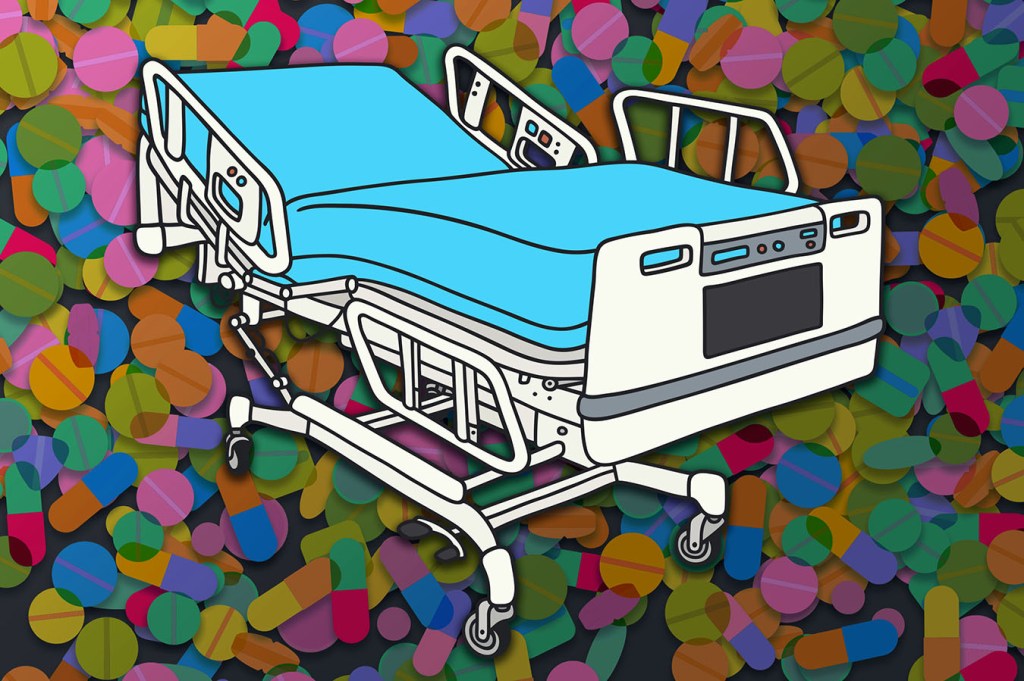It may not be rocket science, but a group of surgeons at the University of Michigan’s Michigan Medicine have devised a strategy to curb the nation’s opioid epidemic — starting at their own hospital.
Their findings appeared online Wednesday in the journal JAMA Surgery.
Opioid addiction has been deemed a “national emergency.” It’s estimated to have claimed 64,000 lives in 2016 alone. And research shows that post-surgical patients are at an increased risk of addiction because of the medication they receive to help manage pain during recovery.
It’s a simple enough idea: Surgeons should give patients fewer pills after surgery — the time when many people are first introduced to what can be highly addictive painkillers. They should also talk to patients about the proper use of opioids and the associated risks.
That seemingly small intervention could lead to significant changes in how opioids are prescribed and make inroads against the current epidemic, said the researchers.
“The way we’ve been prescribing opioids until this point is we’ve basically been taking a guess at how much patients would need,” said Jay Lee, a research fellow and general surgery resident at the University of Michigan, and one of the paper’s authors. “We’re trying to prevent addiction and misuse by making sure patients themselves who are receiving opioids know how to use them more safely — that they are getting a more consistent amount and one that will reduce the risk of them getting addicted.”
The researchers identified 170 patients who underwent gallbladder surgery and surveyed them within a year of the operation — asking how many pills they actually used, what pain they experienced after surgery and whether they had used other painkillers, such as ibuprofen.
They used those findings to create new hospital guidelines that cut back the standard opioid prescription for gallbladder surgeries.
Then, they analyzed how patients fared under the new guidelines, tracking 200 new surgery patients who received substantially fewer pills — an average of 75 milligrams, compared with 250 mg previously. Despite getting less medication, patients didn’t report higher levels of pain, and they were no more likely than the previously studied patients to ask for prescription refills. They were also likely to actually use fewer pills.
The takeaway: After surgery, patients are getting prescribed more opioids than necessary and doctors can reduce the amount without experiencing negative side effects.
Within five months of the new guidelines taking effect at Michigan Medicine, surgeons reduced the volume of prescribed opioids by about 7,000 pills. It’s now been a year since the change took effect, and the researchers estimate they have curbed prescriptions by about 15,000 pills, said Ryan Howard, a general surgery resident and the paper’s lead author.
That has real implications. Studies have found that overprescribing opioids helps drive the epidemic. It can put patients at risk of addiction. And it endangers friends and family, who can easily acquire unused excess pills in, for instance, an unsecured medication cabinet. Reducing prescriptions altogether makes that less likely.
“This really shows in a very methodological way that we are dramatically overprescribing,” said Michael Botticelli, who spearheaded drug-control policy under the Obama White House, including the administration’s response to the opioid crisis.
“Not only do we have to reduce the supply to prevent future addiction, but we really have to minimize opportunities for diversion and misuse,” he said.
More hospitals are starting to turn in this direction, Botticelli said. He now runs the Grayken Center for Addiction at Boston Medical Center, which is also trying to systematically reduce opioid prescriptions after patients have surgery.
Meanwhile, 24 states have passed laws to limit how many pills a doctor can prescribe at once, according to the National Conference of State Legislatures.
“Those limits are just sort of generic limits across the board,” said Chad Brummett, an anesthesiology professor at the University of Michigan and another co-author of the paper. Their concept, he added, “is a step even further beyond what some of these policymakers are trying to do, and it’s one I think surgeons are more likely to adopt.”
The researchers also created a set of talking points for doctors and nurses to use with patients based on “fairly common sense” measures, Lee said. They include:
- Encouraging patients to use lower-strength, non-addictive painkillers first;
- Warning them about the risks of addiction; and
- Reminding them that even a sufficient opioid prescription would leave them feeling some pain.
The talking points also offer tips for patients on safely storing and disposing of extra pills.
“So much of this problem can be addressed with solutions that are not complicated … like telling patients what to do with the medications when they’re finished using them,” said Julie Gaither, an instructor at Yale School of Medicine. Gaither has researched the opioid epidemic’s consequences, though she was not involved with this study.
The Michigan team is pushing its new prescribing guidelines online, in hopes of encouraging other hospitals to adopt similar practices. It also has started implementing the change in other hospitals around the state.
Still, this gets at only a small part of the problem, noted Jonathan Chen, an assistant professor of medicine at Stanford University, who has also researched opioid abuse and addiction. The bulk of opioid prescriptions are written by family doctors and general internists, he said.
“This won’t solve every problem — but nothing ever does,” said Chen, who was not involved with this study. “It’s one concrete area, and a natural place to start.”
This story was produced by Kaiser Health News, an editorially independent program of the Kaiser Family Foundation.


